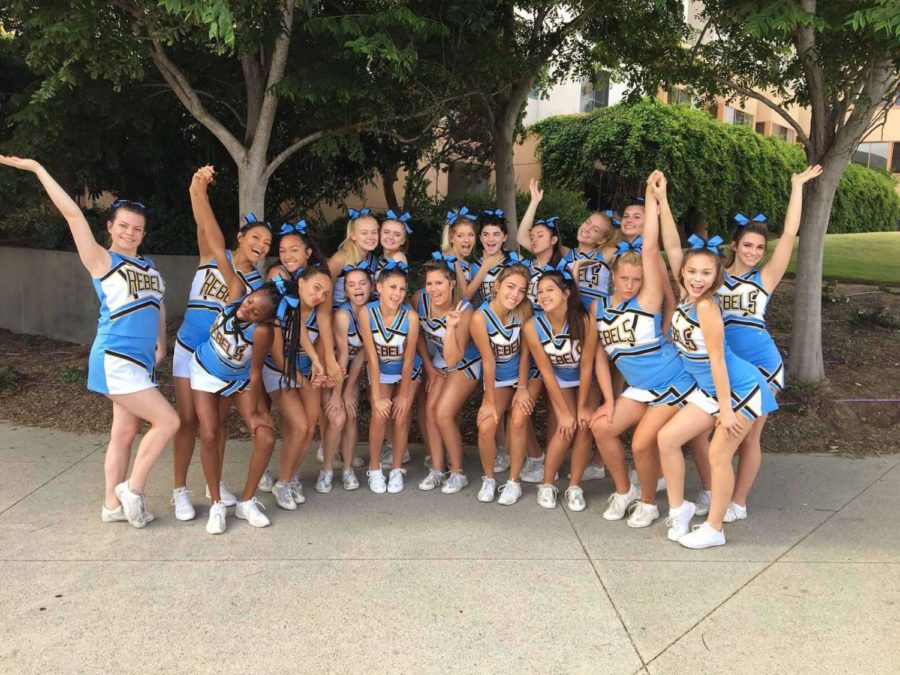Not Just Pom Poms and Skirts
Picture by Violet Mbela
In every cliché high school movie, there are the typical cliques of students. Outside of the general labels of introverted and extroverted, we come upon geeks, nerds, stoners, posers, and usually at the top of this nonexistent social structure: jocks.
Now, in every high school movie, which are never actually written by a high school student, male athletes are depicted as thick-headed creatures known for only speaking in low grunts and slapping each other on their behinds. Female athletes are depicted as ditzy prima donnas who paint on lipgloss like da Vinci and have a penchant for malls and chihuahuas in purses.
In every high school movie, there are only two possible groups that fit the stereotypes: football players and cheerleaders (the only two sports that ever really exist in movies).
Cheerleading is usually classified as a performing art similar to dance or pageantry. But, outside of the toxic stereotypes, there is so much more to cheerleading than just high kicks and short skirts.
This begs the question: is cheerleading an actual sport?
The official Oxford dictionary defines a sport as “an activity involving physical exertion and skill in which an individual or team competes against another or others for entertainment” and immediately cites teams sports such as rugby and soccer for examples.
There is obvious athleticism in cheerleading, starting from tryouts, which usually last a week, which then evolves into grueling practices and camps if one does make the team. Unlike participants of other sports, cheerleaders are expected to smile, chant, and keep spirits high. Our Quartz Hill cheer squad performs not only at a majority of school functions, but also at pep rallies and assemblies. They inspire future freshmen to join when orientation rolls around once a year.
All of the three main positions involved in cheer stunts require some form of athleticism. Bases (the ones tasked with supporting and lifting up
flyers and tumblers) require quite a bit of strength and speed depending on the stunt they are attempting to pull. They need leg, arm, and back strength to lift up their teammates while also at risk of being kicked or punched by an incoming flyer. On top of this, they also need the perfect timing and stamina to keep a squad running and set up to go again and again.
Spotters are crucial to prevent injury or hazard to their teammates. Spotters must keep a sharp eye on flyers to prevent falls while also supporting the structure of the bases. They must be quick on their feet and able to adapt to save a stunt in any way possible. Spotting is possibly one of the most dangerous positions in cheerleading.
Last but not least is the most vied for position in cheer, which is definitely up there with spotting as the most dangerous. Flyers are the ones to whom eyes will immediately gravitate. Because of this, they must never show any trace of obvious fear or hesitation in their jumps. They need to keep their balance on top of the many moving parts of a stunt while also standing stiff, yet loose enough to move to motivate a crowd of excitable teens.
Yet, despite all of this, cheerleaders are put down for “not being athletic enough” or for not having their own games, despite there being hundreds of competitions nationwide: all rigorous and competitive.
So, next time you think you “definitely could do that,” just remember the scrapes, bruises, and broken bones that come along with it all.
And don’t even get me started on all the trash male cheerleaders get.

Hello! My name is Violet, I’m a senior and I’m so happy to be spending my final year in high school as a member of The Ubiquity! Not only did I further...








